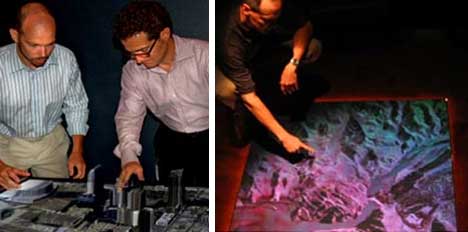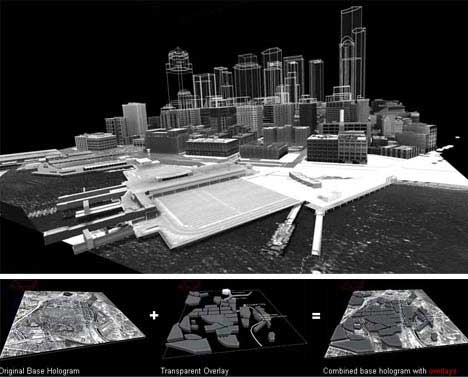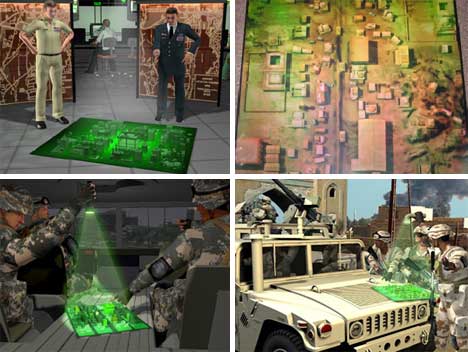
One of the best parts of the architectural development process is the awesome scale models that are made to show what the finished project might look like. But building 3D models is expensive, and the models are extremely difficult to transport. Zebra Imaging has developed a low-cost method for producing 3D holograms that make buildings pop out in amazing detail from all angles.
Holographic Architectural Imaging by Zebra from Core77 on Vimeo.
The holograms are thin enough to fit into an envelope and can be made in just about any size, all the way down to 12 inches by 12 inches. They’re lightweight enough to be carried in luggage, which is something that certainly can’t be said for typical 3D physical models. For very large displays, several tiles can be grouped together to show unbelievable scale and detail.

Holograms were once little more than a pipe dream for sci-fi nuts or, later, a novelty used on children’s stickers. But amazing leaps in imaging and optics technology have led to never-before-possible products like these incredible holograms. By providing digital image data to the company that produces them, architects can receive virtual “models” that can be viewed from any angle and will show just how a finished building will look before the ground is even broken at the building site.

The most amazing thing about this technology is that it by no means has to stop at architecture. Virtually anything can be cast in a 3D hologram, from new car models or proposed consumer gadgets to even the human body. It will let viewers get a close-up look at a product that isn’t yet built, or let medical students take a look inside a human torso without having to make a single incision. Requiring nothing more than a direct light source, holograms could even be how soldiers find their way around battlefields in the near future.

